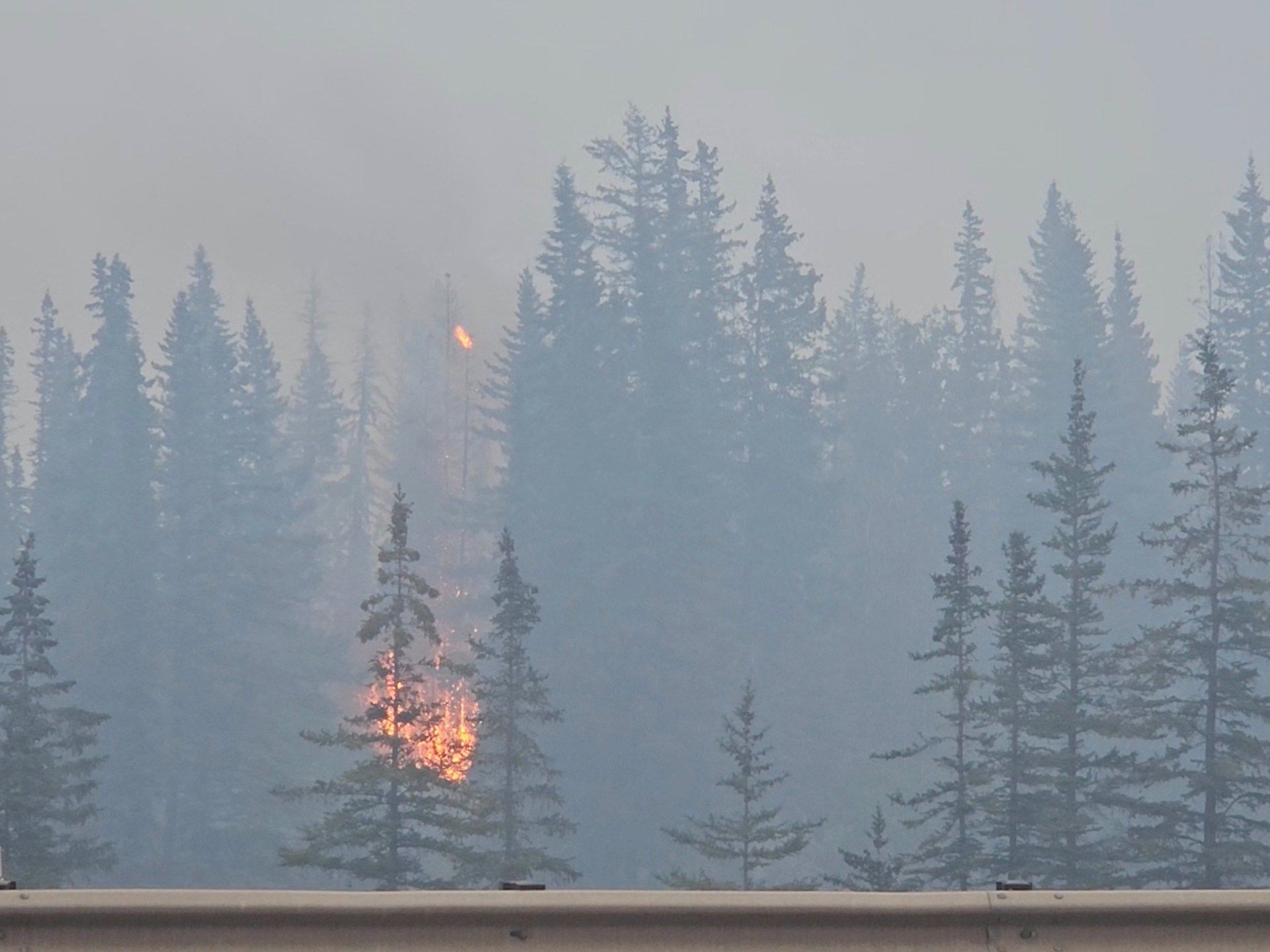The City of Jasper says about 32 percent of the town's structures were destroyed in the fire.
A wildfire that has destroyed about a third of the western Canadian town of Jasper is still burning out of control, but rain and cooler conditions are helping firefighters, officials said.
The town of Jasper is located in Alberta's mountainous Jasper National Park, a major tourist attraction. The town and park, which attract more than two million tourists a year, were evacuated on Monday.
“Rain, cooler temperatures and the incredibly hard work of firefighters have significantly reduced fire activity,” Alberta Premier Danielle Smith said Friday.
Smith told reporters that “it's important to note that the fire is still out of control.”
“It is still unsafe for people to return,” he said.
As of Thursday evening, the Jasper “wildfire complex,” which encompasses three separate fires, was estimated to span 36,000 hectares (about 89,000 acres), according to park officials. However, they cautioned that mapping the complex was difficult due to high winds and “extreme fire behavior.”
Meanwhile, Jasper City Council said at least 358 of the 1,113 structures within the city, about 32 percent, had been destroyed.
⚠️ Jasper Complex Wildfire Update: Updated as of July 26th at 12:40pm ⚠️ image.twitter.com/LSIJrH8oE7
— Jasper National Park, Parks Canada (@JasperNP) July 26, 2024
Authorities estimated there were about 10,000 people in the town of Jasper and 15,000 visitors inside the national park when the evacuation was ordered Monday.
David Leoni, one of thousands of people evacuated, said his family had lost their home of 10 years.
“Even a day and a half after that I still feel very shaken,” he told Canadian television CTV.
“I will gladly come back to see what is left… for me, psychologically, it is good to close this chapter and see for myself what it is like.”
The ravages of the climate crisis
The blaze in the iconic national park, located about 370 kilometres (230 miles) west of the provincial capital, Edmonton, has drawn attention to the devastating wildfire season that has come to define the summer months in North America.
The fire was one of hundreds burning across Western Canada, fueled by a heat wave and an increase in lightning strikes. At least 166 fires were active in Alberta as of Friday, according to a government tracker.
Scientists say the global climate crisis has prolonged the wildfire season in North America, as warmer temperatures create drier conditions that allow fires to spread quickly. Climate change has also been blamed for an increase in the frequency of lightning strikes.
Canada experienced its most intense wildfire season on record in 2023, with more than 6,600 wildfires burning 15 million hectares (about 37 million acres) across the country, an area roughly seven times the annual average.
South of the Canadian border, firefighters were also battling a swath of wildfires in the western United States, with more than 110 active blazes covering 7,250 square kilometers (2,800 square miles) burning as of Friday.
Among them is the Park Fire in California, which destroyed more than 130 structures after it started Wednesday. The blaze, now the largest in the state, started after a man pushed a burning car into a ravine in the northern city of Chico, authorities said.
In Oregon, a search and rescue team confirmed that a firefighting pilot has died after a tanker plane crashed in Oregon. The plane had gone missing Thursday while battling the Falls Fire on the eastern flank of the state.
The largest active wildfire in the U.S. has also been burning in the state: the Durkee Fire, which has scorched nearly 630 square miles (1,630 square kilometers) as of Friday.












